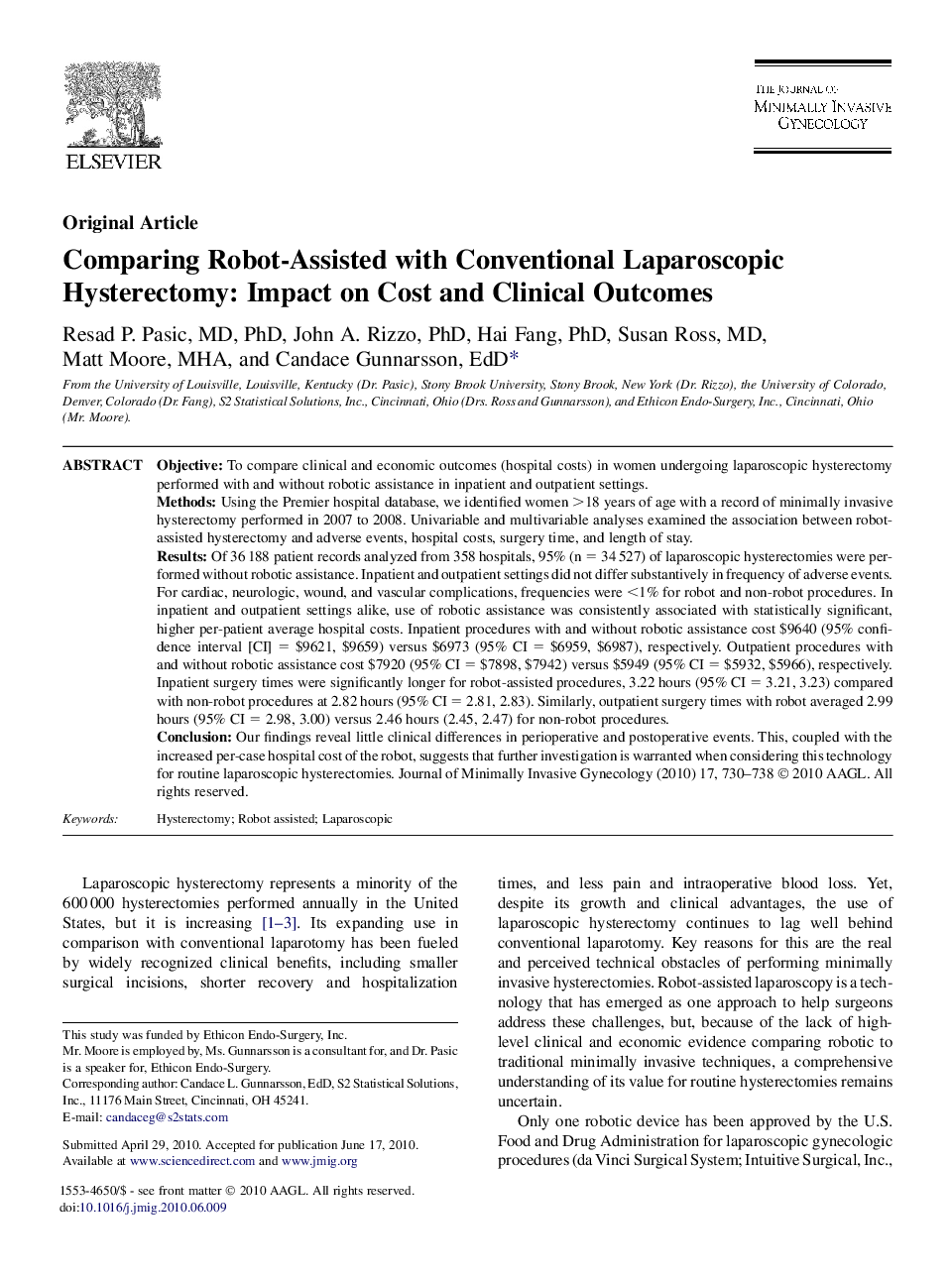| کد مقاله | کد نشریه | سال انتشار | مقاله انگلیسی | نسخه تمام متن |
|---|---|---|---|---|
| 3959414 | 1255449 | 2010 | 9 صفحه PDF | دانلود رایگان |

ObjectiveTo compare clinical and economic outcomes (hospital costs) in women undergoing laparoscopic hysterectomy performed with and without robotic assistance in inpatient and outpatient settings.MethodsUsing the Premier hospital database, we identified women >18 years of age with a record of minimally invasive hysterectomy performed in 2007 to 2008. Univariable and multivariable analyses examined the association between robot-assisted hysterectomy and adverse events, hospital costs, surgery time, and length of stay.ResultsOf 36 188 patient records analyzed from 358 hospitals, 95% (n = 34 527) of laparoscopic hysterectomies were performed without robotic assistance. Inpatient and outpatient settings did not differ substantively in frequency of adverse events. For cardiac, neurologic, wound, and vascular complications, frequencies were <1% for robot and non-robot procedures. In inpatient and outpatient settings alike, use of robotic assistance was consistently associated with statistically significant, higher per-patient average hospital costs. Inpatient procedures with and without robotic assistance cost $9640 (95% confidence interval [CI] = $9621, $9659) versus $6973 (95% CI = $6959, $6987), respectively. Outpatient procedures with and without robotic assistance cost $7920 (95% CI = $7898, $7942) versus $5949 (95% CI = $5932, $5966), respectively. Inpatient surgery times were significantly longer for robot-assisted procedures, 3.22 hours (95% CI = 3.21, 3.23) compared with non-robot procedures at 2.82 hours (95% CI = 2.81, 2.83). Similarly, outpatient surgery times with robot averaged 2.99 hours (95% CI = 2.98, 3.00) versus 2.46 hours (2.45, 2.47) for non-robot procedures.ConclusionOur findings reveal little clinical differences in perioperative and postoperative events. This, coupled with the increased per-case hospital cost of the robot, suggests that further investigation is warranted when considering this technology for routine laparoscopic hysterectomies.
Journal: Journal of Minimally Invasive Gynecology - Volume 17, Issue 6, November–December 2010, Pages 730–738